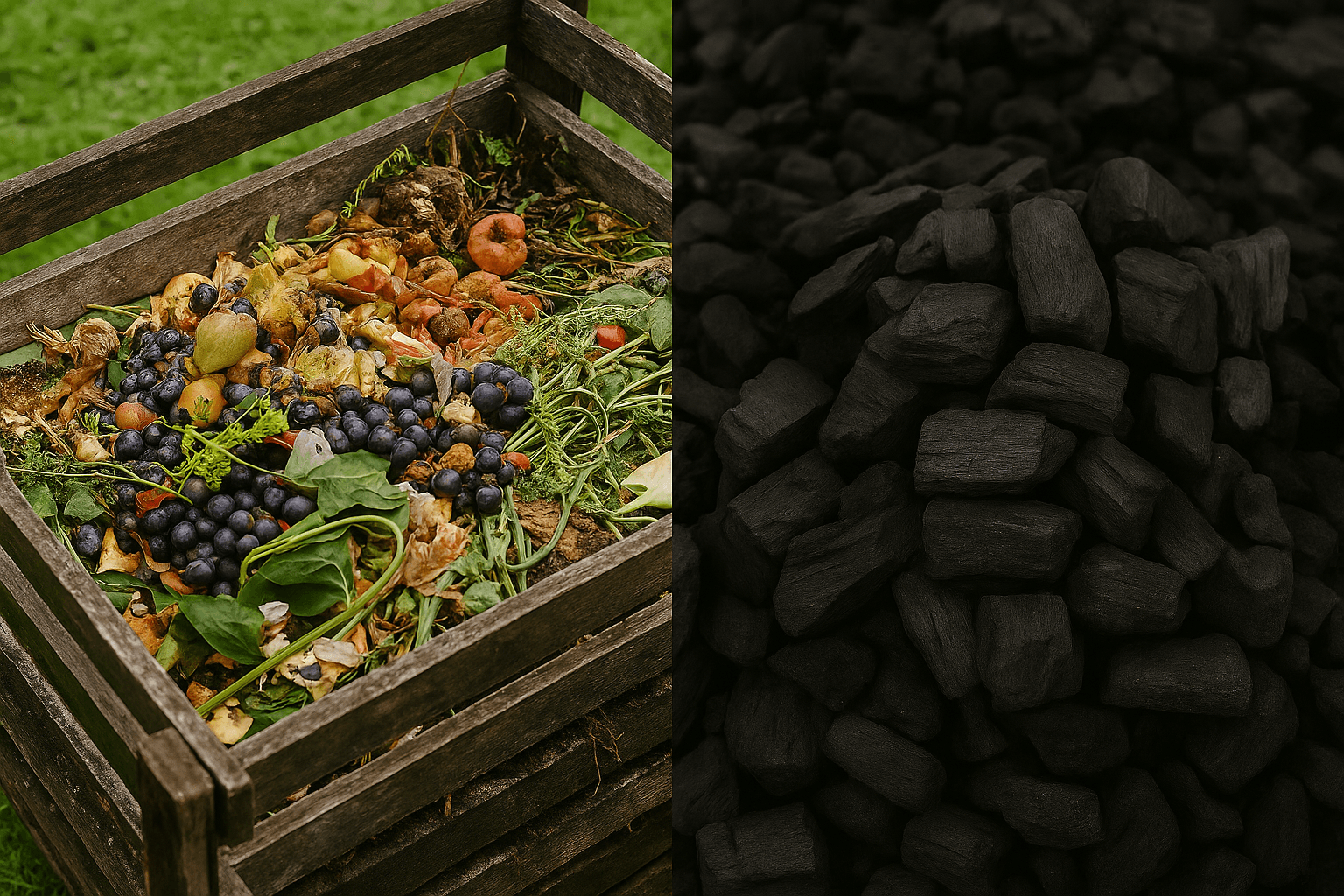What Is Biochar — and Could Turning Food Waste Into Carbon Storage Help Save the Planet?

Imagine turning your kitchen scraps into a carbon-sucking superhero.
That’s biochar. And it’s way more powerful than you think.
1. The Elephant in the Room: Your Banana Peel
You know the stats: food waste is a massive climate problem.
Globally, it’s responsible for ~8-10% of greenhouse gas emissions.
We compost. We try to buy less. We feel guilty.
But what if your leftover coffee grounds or that wilted lettuce could do more than just decompose?
What if they could actively pull carbon from the air and lock it away for centuries?
That’s where biochar comes in.
2. Okay, So What Is Biochar (And Why Should I Care)?
Think of biochar as supercharged charcoal made from organic waste — like food scraps, wood chips, or even manure.
It’s created by heating this waste in a low-oxygen environment (a process called pyrolysis). This doesn’t just get rid of waste; it transforms it into a stable, carbon-rich material.
When added to soil, biochar:
- Locks away carbon for hundreds, even thousands of years. (Unlike composting, which releases CO₂ back into the atmosphere quickly).
- Boosts soil fertility by improving water retention and nutrient availability.
- Reduces the need for chemical fertilizers, which are a major source of emissions.
- Can even help clean up contaminated soils.
Essentially, it’s turning a climate problem (waste) into a climate solution (carbon storage + soil health).
Did You Know?
One ton of biochar can sequester 1.5–2 tons of CO₂, depending on feedstock and process【¹】.
3. So Why Isn’t Biochar Everywhere?
That’s the billion-dollar question.
Here’s why this powerhouse stays in the shadows:
It’s not “new” enough — biochar’s been used for centuries, especially by Indigenous communities in the Amazon
It’s not “sexy” enough — there’s no startup hype cycle
It’s “dirty” — literally. It’s made from waste. And smells like burnt toast.
But that’s also why it works.
Biochar isn’t about perfection. It’s about function.
And in a world of climate spin and carbon confusion, maybe that’s what we need more of.
4. The Value You Don’t See in the Label
Let’s talk tradeoffs.
Biochar isn’t always as cheap as forest offsets.
It doesn’t come with a certificate framed in rainforest stock imagery.
But it’s:
- Permanently removing carbon
- Improving food systems in the Global South
- Reducing agricultural emissions at scale
That’s value that lasts.
At CleanCents, we believe every contribution should feel like progress — not just penance.
5. Challenge: Would You Back the Banana Peel Over the Hype?
You’ve seen the shiny offset dashboards.
You’ve planted the trees.
Now ask yourself:
Would you fund something that smells like smoke but works like a miracle?
Would you choose the dirty truth over the clean illusion?
Drop your thoughts in the comments.
Debate it. Defend it. Or challenge us to prove biochar deserves the spotlight.
6. Because You Care, We Show You the Tools That Work
We don’t sell greenwashed promises. We spotlight solutions that are real — even if they don’t go viral.
Read the full breakdown: What Are You Actually Getting When You Pay to Remove Carbon?
If you care about climate impact, don’t overlook the burnt banana peel.
::ldjson{:data='{"@context": "https://schema.org", "@type": "BlogPosting", "headline": "What Is Biochar — and Could Turning Food Waste Into Carbon Storage Help Save the Planet?", "description": "Learn about biochar, a powerful carbon storage solution made from food waste. Can this ancient technique help save the planet by sequestering carbon and improving soil? CleanCents investigates.", "keywords": "biochar", "carbon storage", "food waste solutions", "soil amendment", "carbon sequestration", "climate change", "sustainable agriculture", "pyrolysis", "articleSection": "Sustainable Solutions", "author": {"@type": "Organization", "name": "CleanCents Team"}, "datePublished": "2025-05-13" }'} ::